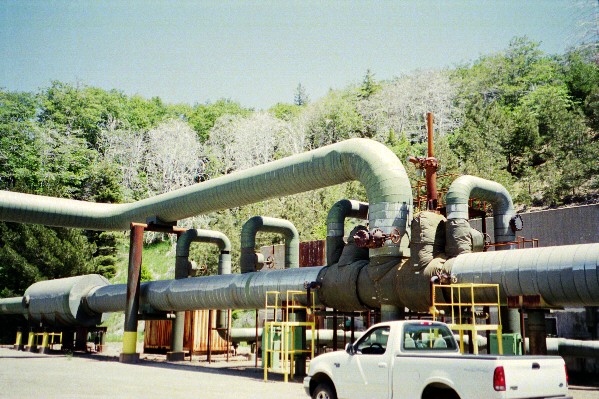
Geothermal energy
Geothermal energy is the name given to heat energy
pouring from deep within the Earth. Geothermal is generally considered a clean and
sustainable form of energy, though limited supplies allow it to be sustainable
only on a relatively small scale.

The
Geysers Geothermal Field in Northern California 
Geothermal
energy was first tapped commercially in the 1920s. Full-scale
commercial development began by 1955.
Since
1987, however, The Geysers has experienced a decline in steam pressure and
electricity production.
Reservoir
heat in the Geysers remains near its original temperature. Injecting
water into the reservoirs can result in the recovery of additional heat.
Field
life at The Geysers is expected to exceed 50 years.
 The
Geysers is the world’s
largest geothermal source, with a peak
capability of 1100 MW. Enough
electricity to supply a city of over a million Californians is produced at the
Geysers continuously.
The
Geysers is the world’s
largest geothermal source, with a peak
capability of 1100 MW. Enough
electricity to supply a city of over a million Californians is produced at the
Geysers continuously.
To
foster higher steam production, the
Geysers are now operated at lower turbine inlet pressures. This increases
the amount of steam recovered by lowering field abandonment pressure.
